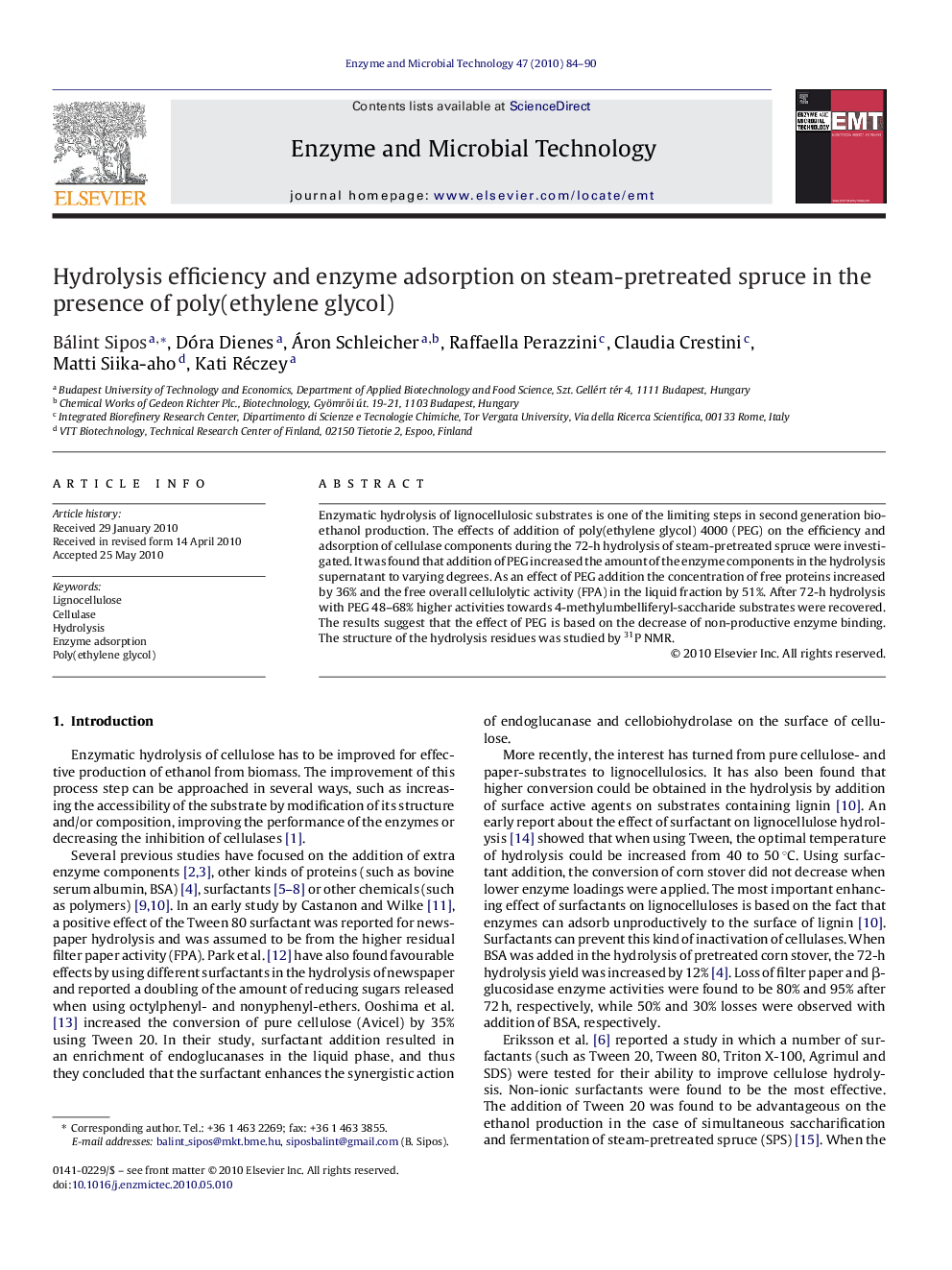| Article ID | Journal | Published Year | Pages | File Type |
|---|---|---|---|---|
| 17617 | Enzyme and Microbial Technology | 2010 | 7 Pages |
Enzymatic hydrolysis of lignocellulosic substrates is one of the limiting steps in second generation bio-ethanol production. The effects of addition of poly(ethylene glycol) 4000 (PEG) on the efficiency and adsorption of cellulase components during the 72-h hydrolysis of steam-pretreated spruce were investigated. It was found that addition of PEG increased the amount of the enzyme components in the hydrolysis supernatant to varying degrees. As an effect of PEG addition the concentration of free proteins increased by 36% and the free overall cellulolytic activity (FPA) in the liquid fraction by 51%. After 72-h hydrolysis with PEG 48–68% higher activities towards 4-methylumbelliferyl-saccharide substrates were recovered. The results suggest that the effect of PEG is based on the decrease of non-productive enzyme binding. The structure of the hydrolysis residues was studied by 31P NMR.
